Brazil flag is not only beautiful, but it also is one of the most recognizable ones no matter where you go.
The Brazilian flag is not only one of the most significant symbols of the country but also of Brazilian culture.
As someone who was born and raised in the country, I can safely say I don’t know a single person in Brazil who is not proud of such beauty as you probably are of your country’s flag too.
Brazil flag colors are bright and contrast nicely with each other, but it isn’t easy to reproduce.
Among the world’s most difficult flags to draw, the characteristic blue and yellow flag is a symbol of the Brazilian proud.
And to help you understand the Brazil flag meaning, our most significant symbol, I have to talk about more than just the colors of Brazil. I have to talk about the country’s history.
History is essential to understand its meaning and design, including the stars on it. Still, I promise to keep this post straightforward.
Besides the flag of Brazil, I’ll also show you the very first flag of the country, Brazil state flags, and the flag of Brazil’s capital, Brasília.
Please let me know in the comments below which one you think it’s prettiest of all flags in this post. I’m curious!
What does the Brazil flag look like?
The Brazilian flag is made up of a green rectangle-shaped base, overlaid with a yellow rhombus and a blue circle in the middle.
The blue circle depicts a starry sky spanned by a curved descending white stripe with our national motto “Ordem e Progresso” in green letters.
“Ordem e Progresso” means “order and progress” in English.
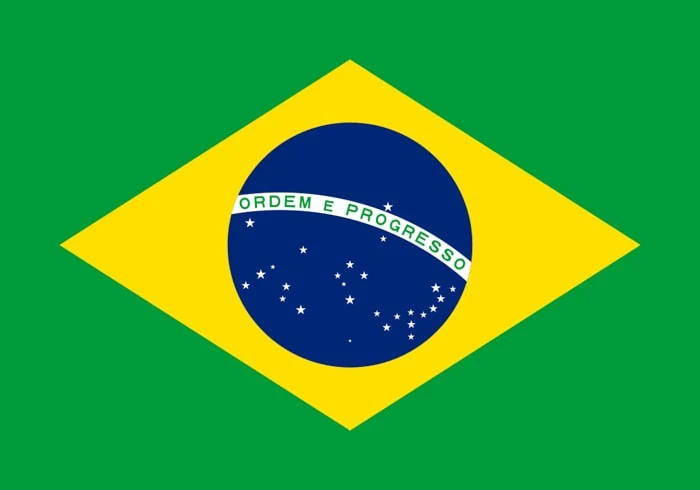
Brazil national flag: the story behind the flag
The first Brazil flag was created during the Empire of Brazil.
Only a few days after the country’s independence from Portugal, which took place on September 7, 1822, the first Brazilian flag was created and presented to the country.
Namely, on September 18, 1822, the creation of the Brazilian flag below was sanctioned by a decree of Don Pedro I, who at the time hadn’t been proclaimed emperor yet.
Don Pedro I himself chose the colors of the flag, and its design was the work of the French painter Jean-Baptiste Debret.
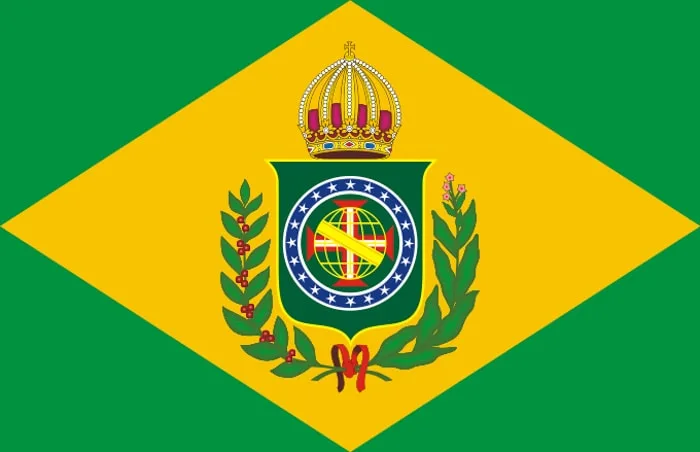
While creating the first Brazil flag, the French painter said to feel inspired by the flags used during the French Revolution and the Napoleonic Period.
That flag had a green rectangle-shaped base, also overlaid with a yellow rhombus, but the rhombus was bigger than the shape on the current flag of Brazil.
Debret also designed the Imperial Coat of Arms featured inside the rhombus at the time.
Brazil flag: A new flag for a new country
Years later, on November 15, 1889, Brazil finally put an end to its years of monarchy and became a republic.
At the time, many symbols were replaced to reflect the republic, including the Brazil flag.
Four days after the proclamation of the republic, the country officially adopted a new flag replacing the Imperial one.
Marshal Deodoro da Fonseca, our temporary first president of Brazil, signed a decree officializing that the colors of the old flag should be maintained.
Regardless of the form of government, these colors symbolize the continuity and integrity of Brazil among other nations.
However, other changes were made to the new flag of Brazil:
- The yellow rhombus was redimensioned.
- The Imperial Coat of Arms was replaced by the blue circle.
- In the middle of the circle, the national motto was added to a white stripe.
- White stars were added to the blue circle.
The designers of the new flag were Raimundo Teixeira Mendes, Miguel Lemos, Manuel Pereira Reis, e Décio Vilares.
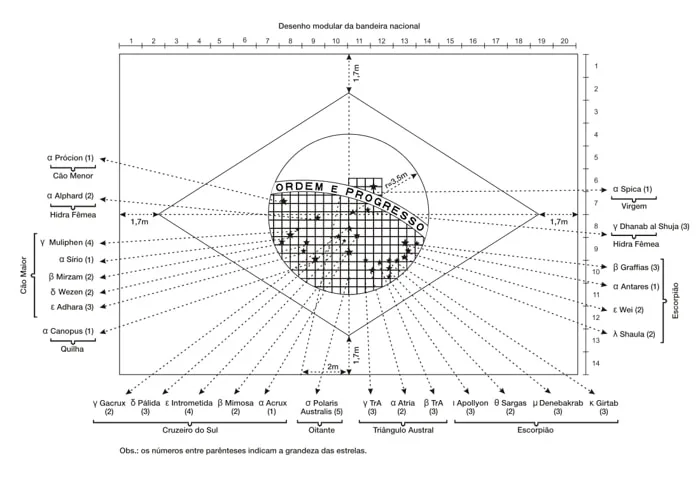
Brazil flag: The meaning behind the colors
As kids, many people in Brazil learn that the colors of our flag symbolize the abundant flora, gold, and the blue skies in our country.
Although that explanation is cute, it isn’t accurate.
The Brazil flag colors were inspired by significant events in Portuguese history.
Don Pedro I, the Emperor of Brazil, was not only Portuguese but also the son of a Portuguese king, which clearly shows where he was coming from.
The green
The green in the Brazilian flag comes from the Coat of Arms of the House of Braganza.
Emperor Pedro I belonged to the Braganza dynasty.
The yellow
The yellow represents the House of Habsburg and the Coat of Arms of Portugal.
For reference, Empress Maria Leopoldina, Don Pedro’s wife, belonged to the Habsburg dynasty.
The blue
The blue color in the flag is perhaps the most Brazilian color of all. That’s because the blue circle illustrates the starry night in Rio de Janeiro on the night of November 15, 1889, when the Proclamation of the Republic took place.
On that day, Brazil was utterly free of the Portuguese ruling.
Brazil flag: Exact colors
| Scheme | Green | Yellow | Blue | White |
| CMYK | 100-0-62-38 | 0-12-100-0 | 100-66-0-53 | 255-255-255 |
| Hex triplet | #009c3b | #ffdf00 | #002776 | #ffffff |
| Pantone | 354 2X | Yellow | 280 | White |
| RGB | 0-156-59 | 255-223-0 | 0-39-118 | 0-0-0-0 |
The meaning behind the stars in the Brazilian flag
As said, the blue circle depicts the starry night in Rio de Janeiro on the night of November 15, 1889, when the Proclamation of the Republic took place.
Editor’s note: November 15 is a national Brazilian holiday.
At the time, the astronomer Manuel Pereira Reis was invited to draw the position of the stars for the new flag.
Each star on the flag of Brazil represents a Brazilian state and the capital, Brasília. There 26 states in total; therefore, the Brazil flag has 27 stars.
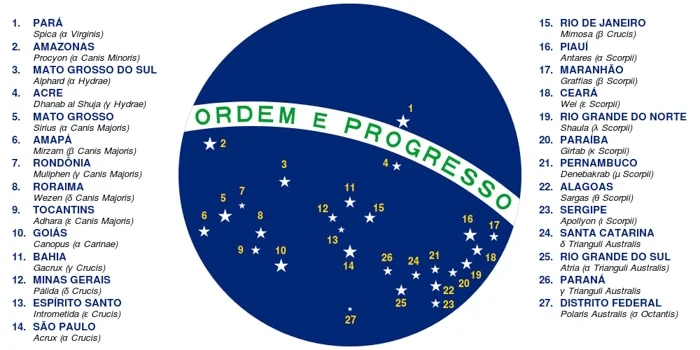
The precise positions of the 27 stars on the globe make the Brazilian flag one of the most complicated national flags to construct.
Each star in a constellation was designated to a specific state based on its location in the Brazilian territory—north, south, etc.
For instance, the “central” states of Brazil, São Paulo, Rio de Janeiro, Espírito Santo, Minas Gerais, and Bahia are represented by the Crux constellation right in the middle of the flag.
All stars have the same shape with five points. However, they differ in size, there are five distinct sizes.
| Brazilian States | Stars |
| Acre | Gamma Hydrae |
| Mato Grosso do Sul | Alpha Hydrae |
| Amazonas | Procyon (Alpha) Canis Minor |
| Pará | Spica (Alpha) Virginis |
| Maranhão | Beta Scorpii |
| Piauí | Antares (Alpha) Scorpii |
| Ceará | Epsilon Scorpii |
| Rio Grande do Norte | Lambda Scorpii |
| Paraíba | Kappa Scorpii |
| Pernambuco | Mu Scorpii |
| Alagoas | Theta Scorpii |
| Sergipe | Iota Scorpii |
| Bahia | Gamma Crucis |
| Espírito Santo | Epsilon Crucis |
| Rio de Janeiro | Beta Crucis |
| São Paulo | Alpha Crucis |
| Minas Gerais | Delta Crucis |
| Paraná | Gamma Trianguli Australis |
| Santa Catarina | Beta Trianguli Australis |
| Rio Grande do Sul | Alpha Trianguli Australis |
| Goiás | Canopus Argo Navis |
| Mato Grosso | Sirius Canis Major |
| Amapá | Beta Canis Major |
| Rondônia | Gamma Canis Major |
| Roraima | Delta Canis Major |
| Tocantins | Epsilon Canis Major |
| Brasília (DC) | Polaris Australis |
Brazilian states colored by constellations
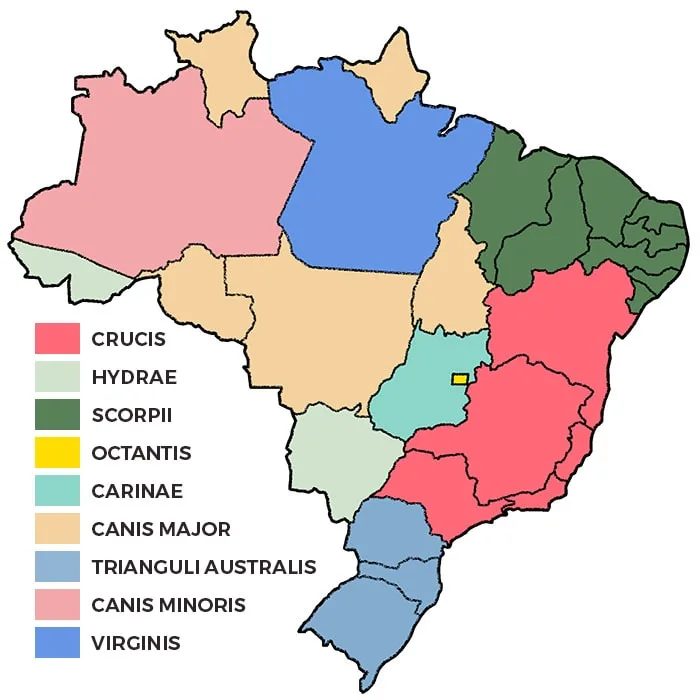
Read next: Brazil maps – FREE download
Fun facts about the flag of Brazil
The upper, lone star isn’t Brazil’s capital
Unlike popular belief, the lone star in the top half of the circle isn’t the capital, Brasília, but Pará.
At the time, Pará was the northernmost state in the country. Later, Amapá and Roraima were created.
A senator from Rio de Janeiro asked for a change in the law to switch both stars, therefore, leaving Brazil’s capital alone at the upper part of the flag. The change hasn’t been approved yet.
New stars
Brazil flag was changed in 1992 to add four stars representing the new states of the republic, Amapá, Roraima, Rondônia, and Tocantins.
Another Brazil fun fact is that the law imposes the flag should always be up-to-date. That means if a Brazilian state is created or abolished, the stars on the flag should reflect that.
Flags of the 26 Brazilian states
Here are the flags of all Brazilian states and the capital, Brasília:
Brasília flag (DC)
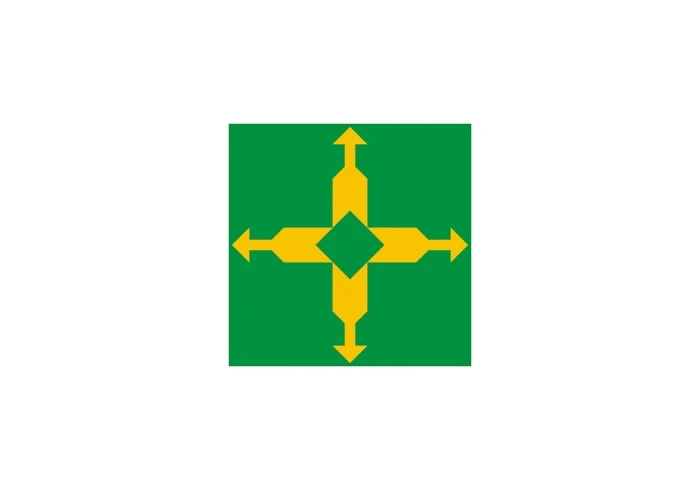
Acre flag
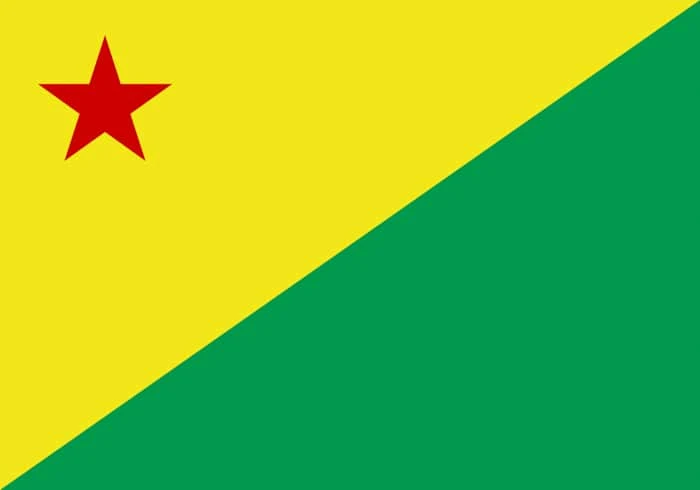
Alagoas flag
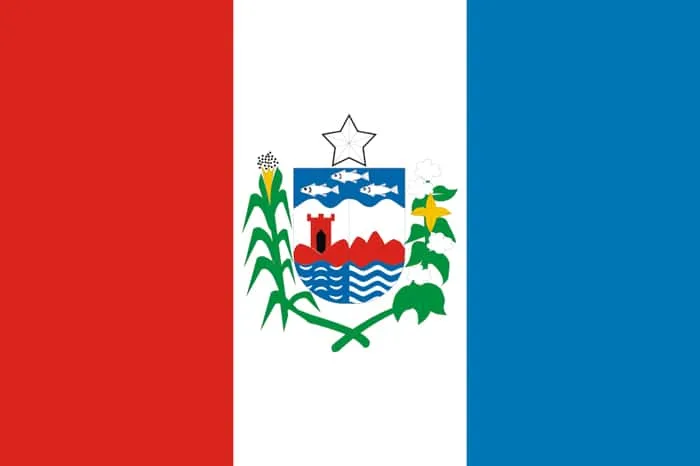
Amapá flag
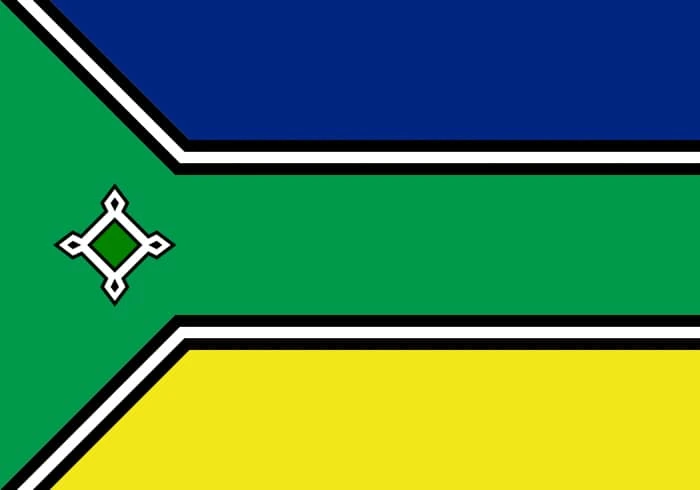
Amazonas flag
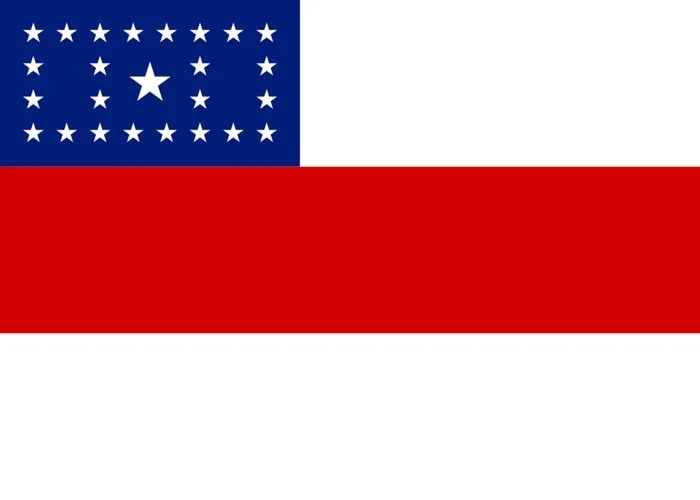
Bahia flag
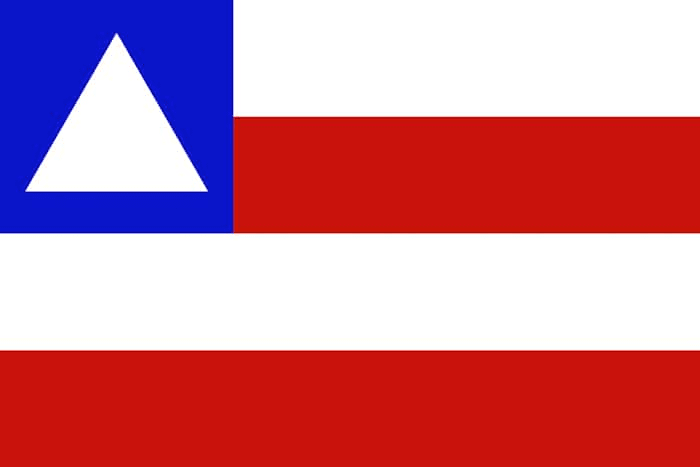
Ceará flag
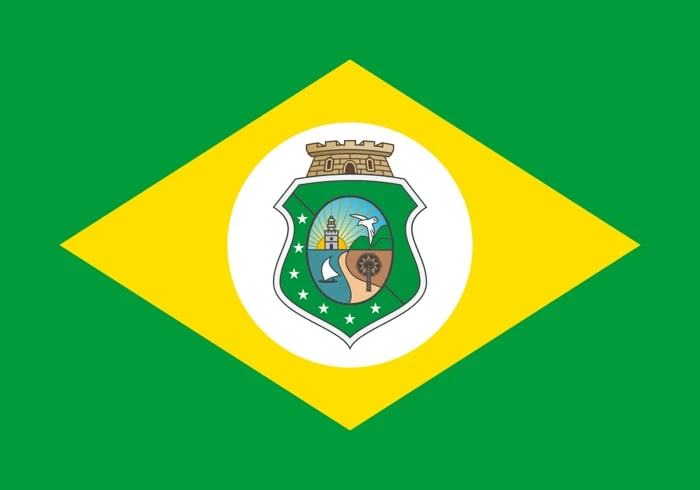
Espírito Santo flag
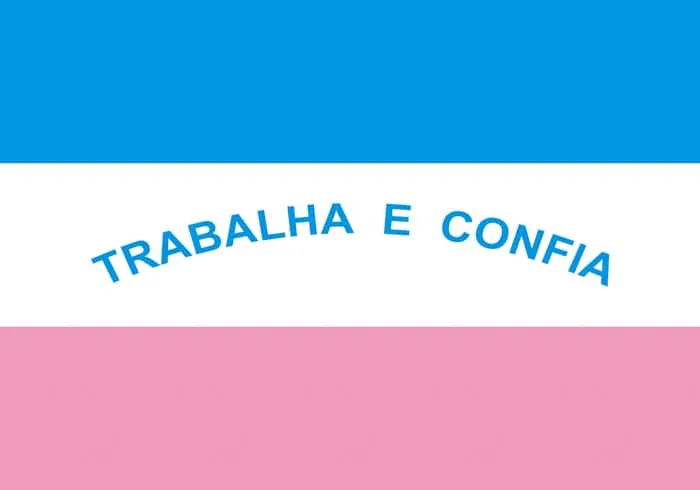
Goiás flag
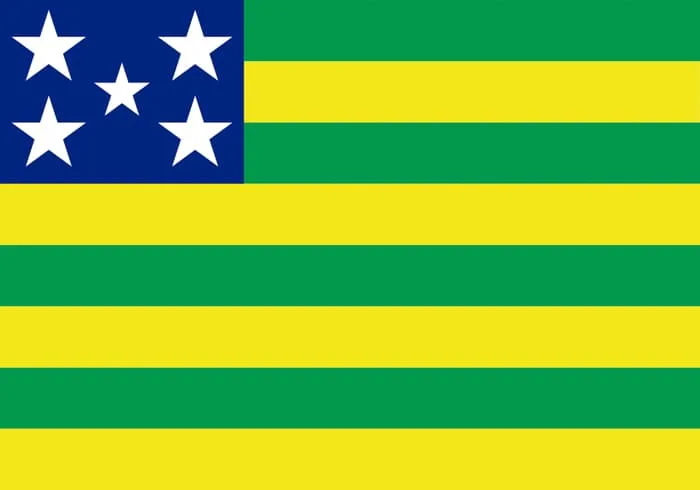
Maranhão flag
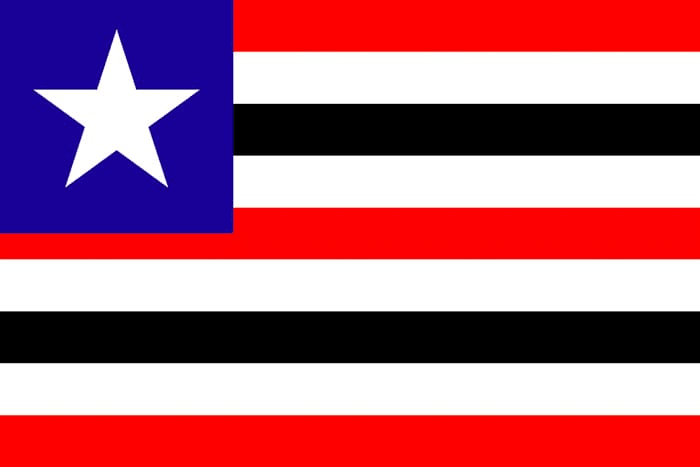
Mato Grosso flag
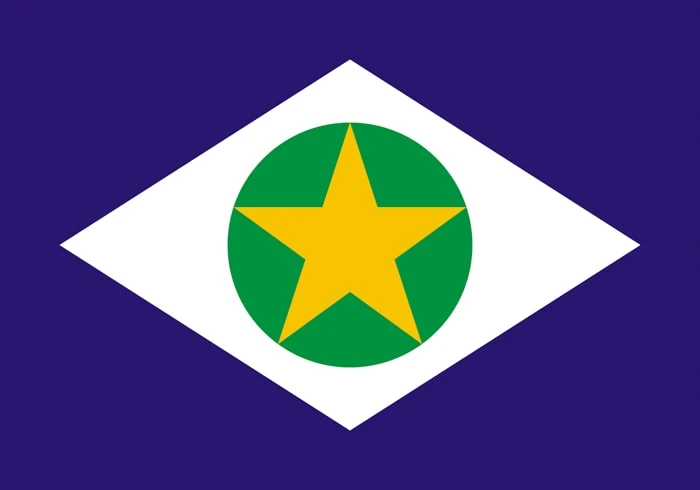
Mato Grosso do Sul flag
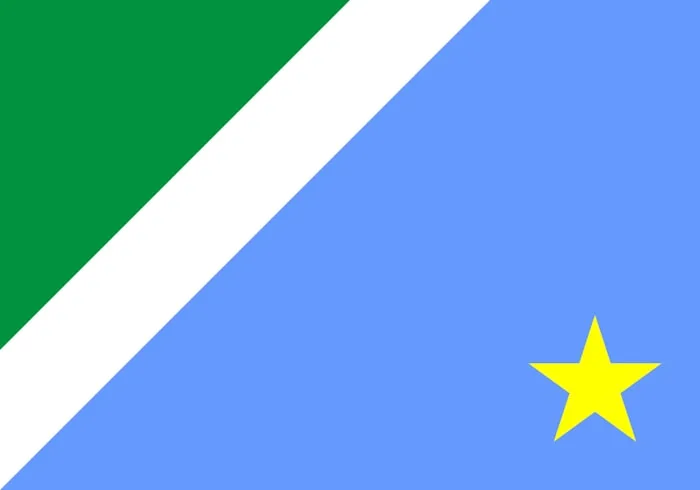
Minas Gerais flag
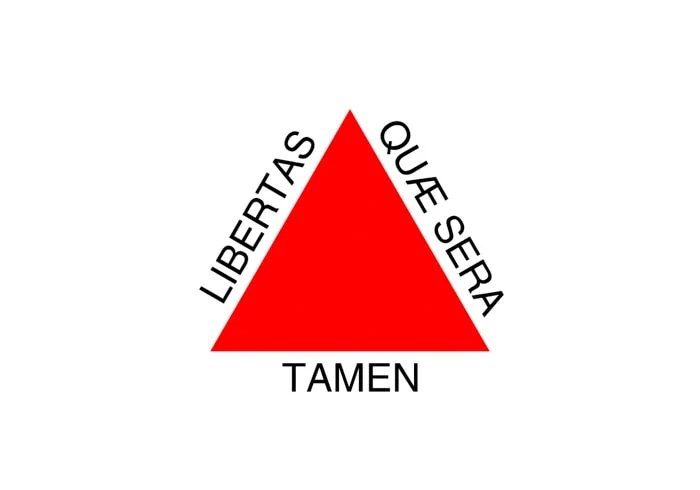
Pará flag
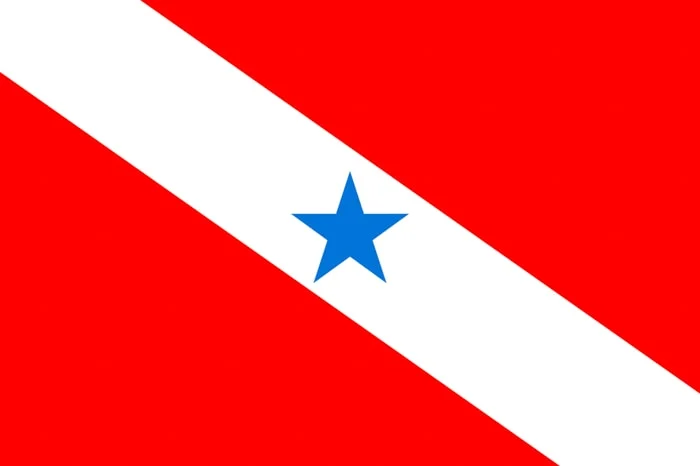
Paraíba flag
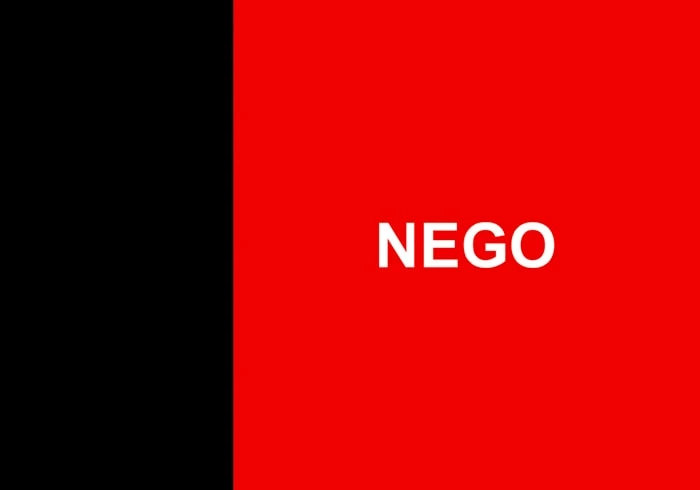
Paraná flag
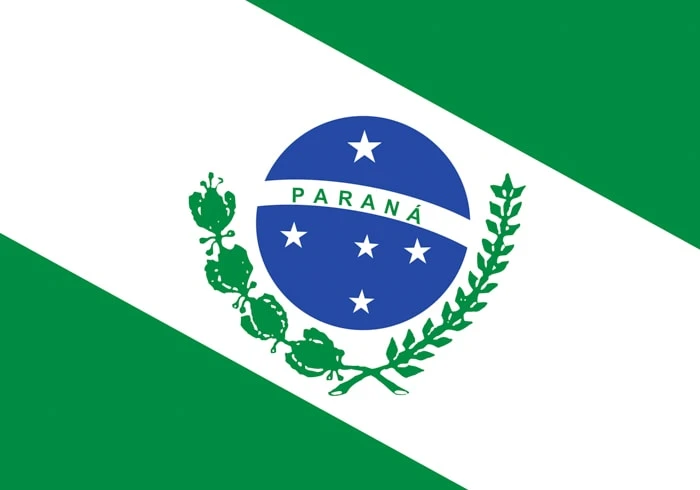
Pernambuco flag
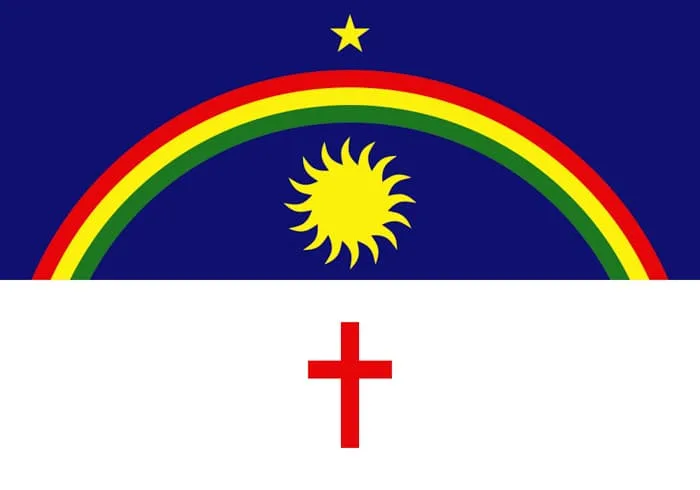
Piauí flag
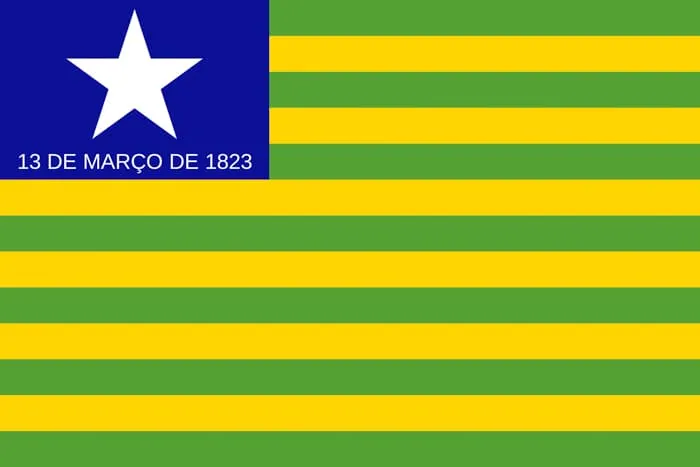
Rio de Janeiro flag
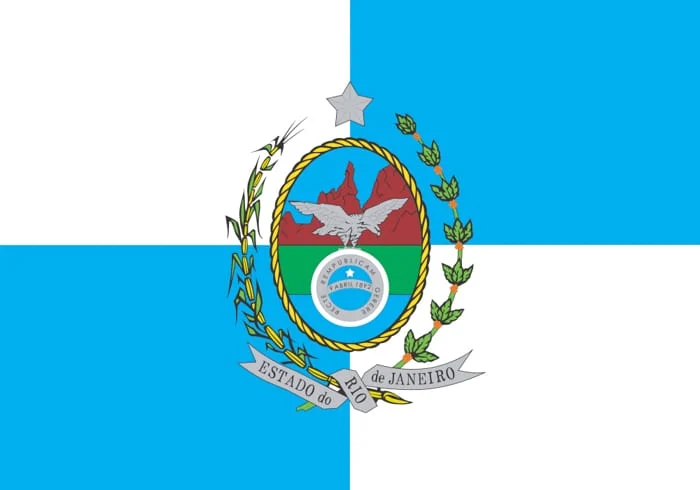
Rio Grande do Norte flag
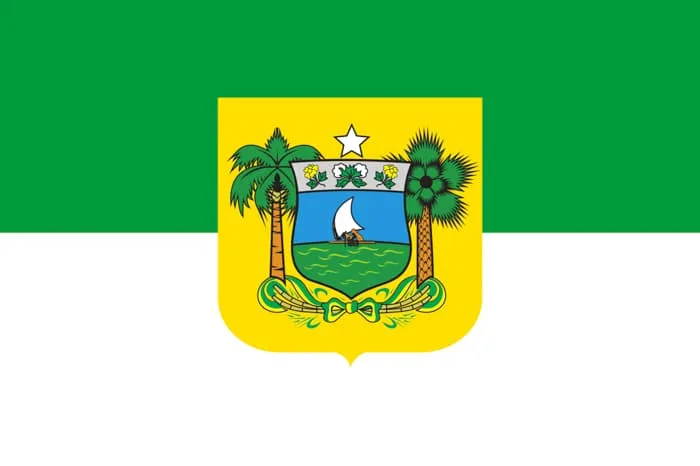
Rio Grande do Sul flag
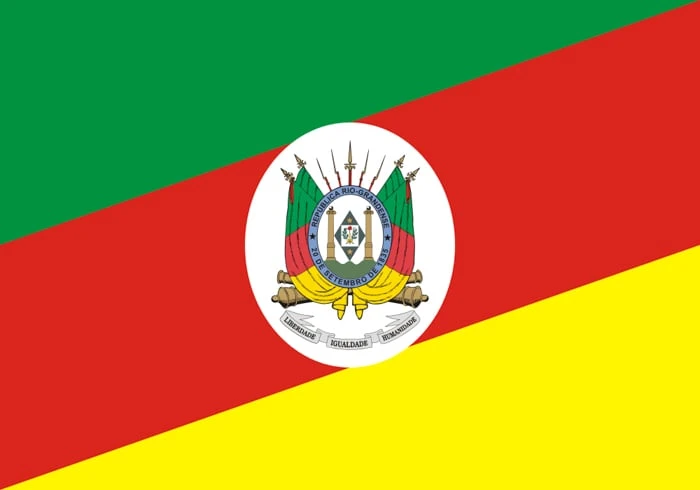
Rondônia flag
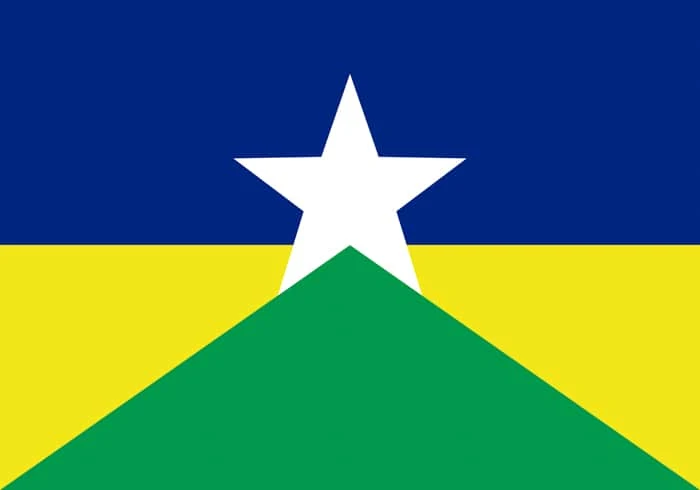
Roraima flag
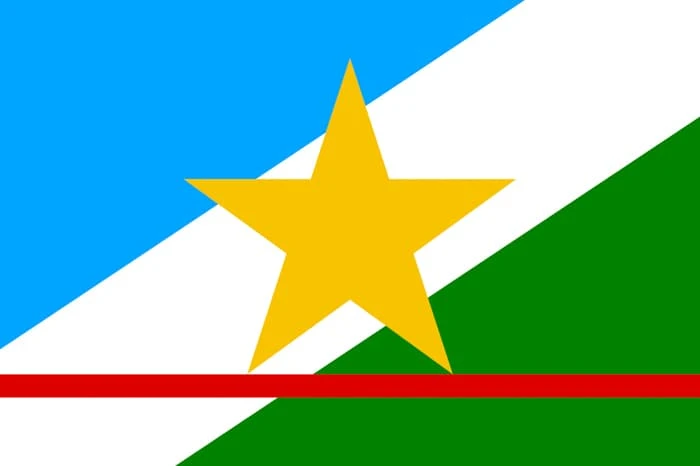
Santa Catarina flag
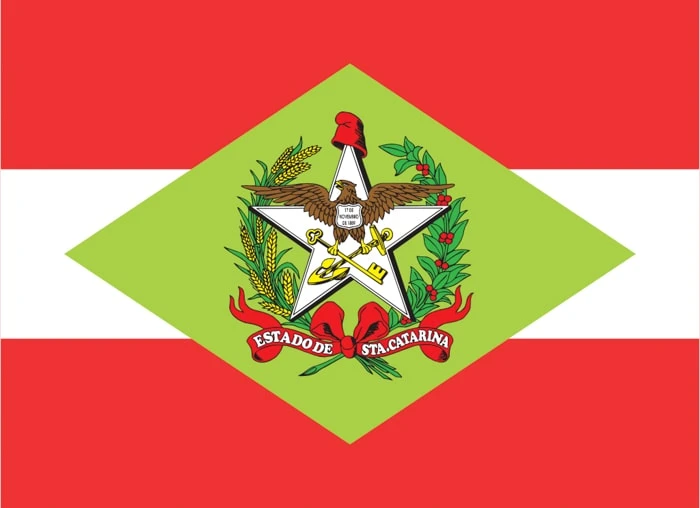
São Paulo flag
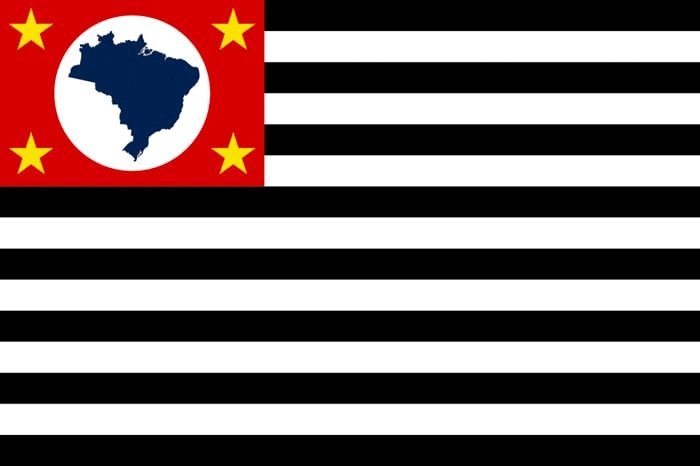
Sergipe flag
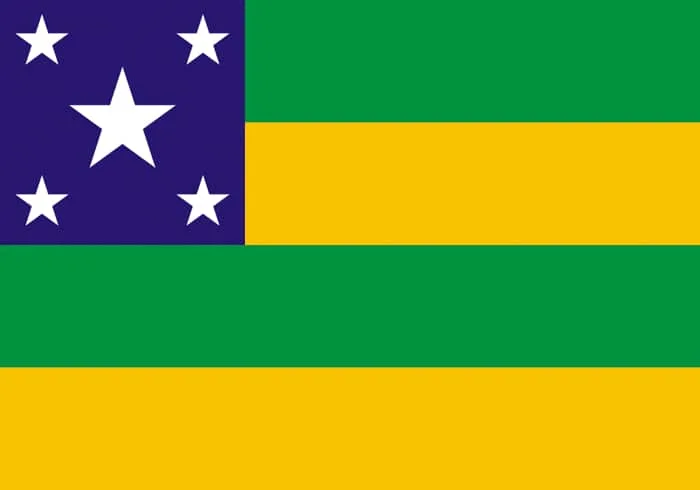
Tocantins flag
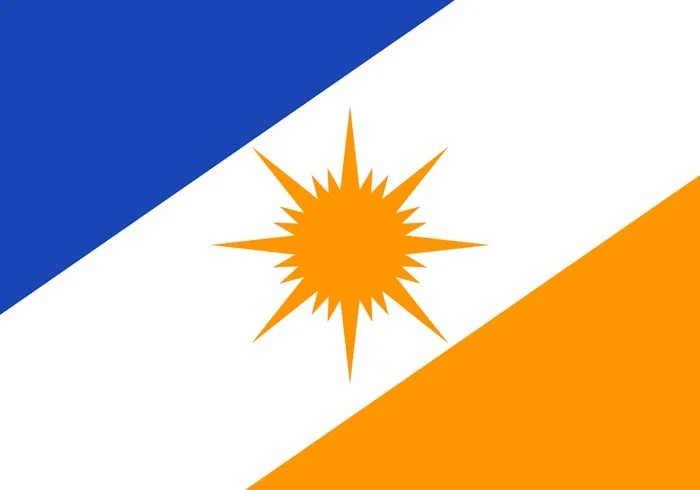
Final words on the flag of Brazil
I showed you the Brazilian flags over time and how history shaped our most valuable symbol.
Although our country is relatively new, it has a fascinating past, which is a story we tell the world every time we wave our flag.
Now that you know all about the Brazilian flag and the flags of the Brazilian states, find out more about this “charismatic land” with my articles about Brazil.
I hope you enjoyed it. Please let me know in the comments what is your favorite state flag. I’m curious!

𝒮ℯ𝒷𝒶𝓈𝓉𝒾𝒶𝓃𝒶
Sunday 9th of January 2022
Adorei o seu artigo. Bem educativo! Obrigada 😊
Kelder
Wednesday 9th of September 2020
What an amazing post! Congratulations!
Bruna
Thursday 10th of September 2020
Hi Kelder, glad you like it! Thanks for your comment!